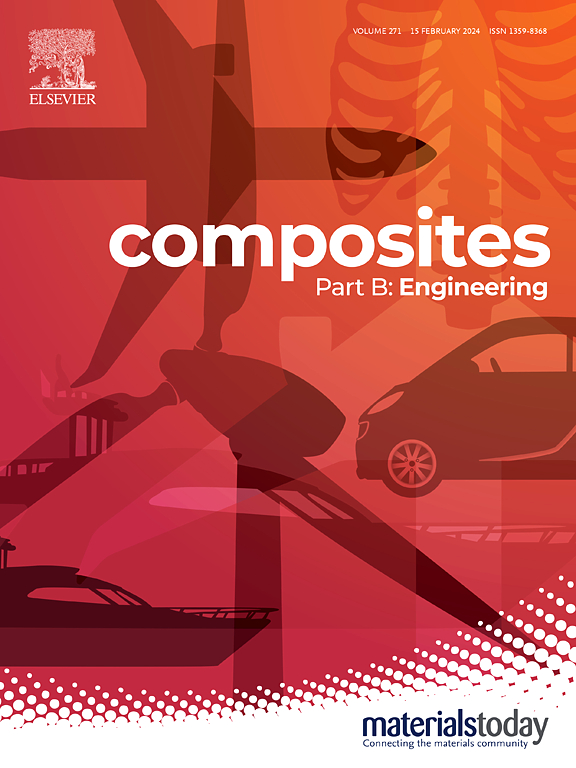A comprehensive investigation into the influence of variation in the stacking sequence on the mechanical behaviour and drilling machinability of basalt fiber-reinforced composite tubes
IF 12.7
1区 材料科学
Q1 ENGINEERING, MULTIDISCIPLINARY
引用次数: 0
Abstract
In composite materials, stacking of layers at different angles and changes in stacking sequence significantly affect not only the mechanical behavior but also the machinability characteristic of the composite structure. Therefore, the variation in stacking sequence represents a recent and important research topic in fiber-reinforced plastics. The objective of this study was to investigate the mechanical properties and drilling machinability characteristics of BFRP composite pipes in three different stackings: [±30/±60/±90]3, [±60/±90/±30]3 and [±90/±30/±60]3. The experimental results demonstrate that the stacking sequence has a significant effect on the mechanical behavior and drilling-induced damage formation. It is determined that the [±90/±30/±60]3 sample provided the highest performance in terms of mechanical properties but increased the thrust force during drilling. Furthermore, it is observed that the positioning of the ±90 layer has a considerable impact on both the mechanical and machinability outputs.
求助全文
约1分钟内获得全文
求助全文
来源期刊

Composites Part B: Engineering
工程技术-材料科学:复合
CiteScore
24.40
自引率
11.50%
发文量
784
审稿时长
21 days
期刊介绍:
Composites Part B: Engineering is a journal that publishes impactful research of high quality on composite materials. This research is supported by fundamental mechanics and materials science and engineering approaches. The targeted research can cover a wide range of length scales, ranging from nano to micro and meso, and even to the full product and structure level. The journal specifically focuses on engineering applications that involve high performance composites. These applications can range from low volume and high cost to high volume and low cost composite development.
The main goal of the journal is to provide a platform for the prompt publication of original and high quality research. The emphasis is on design, development, modeling, validation, and manufacturing of engineering details and concepts. The journal welcomes both basic research papers and proposals for review articles. Authors are encouraged to address challenges across various application areas. These areas include, but are not limited to, aerospace, automotive, and other surface transportation. The journal also covers energy-related applications, with a focus on renewable energy. Other application areas include infrastructure, off-shore and maritime projects, health care technology, and recreational products.
 求助内容:
求助内容: 应助结果提醒方式:
应助结果提醒方式:


